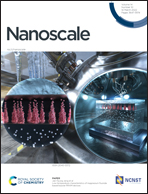Integrated osteochondral differentiation of mesenchymal stem cells on biomimetic nanofibrous mats with cell adhesion-generated piezopotential gradients
Abstract
Biomimetic piezoelectric scaffolds provide a noninvasive method for in vivo cell regulation and tissue regeneration. Herein, considering the gradually varied piezoelectric properties of native cartilage and bone tissues, we fabricated biomimetic electrospun poly(L-lactic acid) (PLLA) nanofibrous mats with gradient piezoelectric properties to induce the integrated osteochondral differentiation of rat mesenchymal stem cells (MSCs). Nanofibrous mats are polarized under electric fields with linear variation of strength to generate gradient piezoelectricity, and cell adhesion-derived contraction forces could produce gradient piezoelectric potential on the scaffolds. Our results demonstrated that the piezoelectric potential could positively modulate cell adhesion, intracellular calcium transients, Ca2+ binding proteins, and differentiation-related genes. In addition, the differentiation of MSCs into osteogenic and chondrogenic lineages was integrated on a single scaffold at different areas with relatively high and low piezoelectricity values, respectively. The continuous gradient scaffold exhibited the potential to provide a smooth transition between the cartilage and bone, offering new insights to probe the regeneration mechanisms of the osteochondral tissue in a single scaffold and inspiring a future efficient and rational design of piezoelectric smart biomaterials for tissue engineering.



 Please wait while we load your content...
Please wait while we load your content...